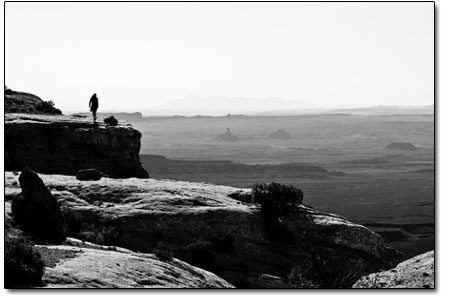| ||
Earthquakes rattle the region
by Amy Levek Earthquakes can happen, even in the landlocked high desert. However, oil and gas exploration could be putting the Four Corners region on shakier ground than usual. “A magnitude 3.6 or 3.7 can happen almost anywhere,” says U.S. Geological Survey seismologist Bruce Presgrave, with the National Earthquake Information Center in Golden. According to Presgrave, Southwest Colorado, Eastern Utah and Northern New Mexico all experience seismic events occasionally. But past evidence linking the practice of injecting liquids underground (including the industry practice of “frac-ing”) and seismic activity could pinpoint humans as the cause of back-to-back temblors earlier this month in Bluff, Utah, and Chama, N.M. Chama area residents felt the earth shake around 8 a.m. on June 4, when a magnitude 3.7 quake rumbled about 29 miles away. Two days later, Bluff shook with a nearby 3.6 temblor. Neither caused any damage, although one trailer in Bluff reportedly had some items fall from a shelf, according to Jim Hook, Bluff’s fire chief. “Some people heard a really loud noise in their house,” he recounts. “In fact, one of my EMTs thought there had been a crash and grabbed her stuff and went out (for the call).” Hook, who owns Bluff’s Recapture Lodge, was driving back from the Sand Island put-in on the San Juan River and didn’t feel a thing. “The world could have ended and I wouldn’t have known,” he said. In fact, it wasn’t until the sheriff later called to tell him the Salt Lake City press was calling, that he knew there had even been an earthquake. His son, however, who was swimming at the time, had a different experience. “My boy was in a pond and the water was shaking,” he said. “He thought that the dog was shivering, shaking,” Other Bluff residents were equally split on the quake, according to Jackie, a Recapture employee. “Half of us missed it,” she said. “Husbands and wives are fighting about whether or not it happened.” Flipping through records, Presgrave identified six events of 3.5 or greater within a 150-kilometer (or 93-mile) radius of Durango since 1973, with four of those happening since 1994. That includes a 4.6 earthquake about 12 miles west of Ridgway on Sept. 13, 1994, that many remember for its force and sound (“like a train coming through”). Last November, a magnitude 3.3 also occurred in the same area. The strongest earthquake in the region Pregrave found was a 5.1 magnitude in Dulce, N.M., in 1966 that caused $200,000 in damage. “There can be moderate earthquakes in the Colorado Plateau and the Central Rocky Mountains, although they’re not as common as in California,” explains Presgrave. However, with quakes the size of last week’s, damage is minimal, “even if it were right underneath the town.” Nevertheless, the uptick in regional seismic action may not be solely the work of Mother Nature. Presgrave acknowledged that injection of liquids underground can cause earthquakes, and given oil and gas activity in the region, human-triggered seismic activity is not out of the question. “There has been evidence of induced seismicity from secondary injection,” he said, pointing to recent activity in Paradox Valley, northwest of Durango on the Colorado-Utah border. In 2000 and again last summer, Paradox Valley experienced a rash of earthquakes. The quakes were ultimately linked to a U.S. Bureau of Reclamation project in which salty water was injected into 14,000-foot wells in an effort to desalinate the Colorado River. The desalination system lubricated fissures and fault lines, causing a series of earthquakes, and the Bureau of Reclamation agreed to periodically stop pumping to reduce earthquake danger. According to Presgrave, there also is a link between oil field injection and seismic activity. Since 1963, 19 small earthquakes with magnitudes 2.5 or greater have occurred near the Rangely oil fields, in northern Colorado. In 1995, a 4.9-magnitude quake shook the area. From 1969-73, the USGS studied the phenomena, establishing a correlation between deep water well injection and the quakes. Likewise, additional research in Florida, Kuwait and Indonesia has confirmed that earthquakes and some resulting tsunamis have been triggered by oil field injections. There is also anecdotal evidence elsewhere in Colorado that this may be the case. “We are seeing some earthquakes west of Trinidad and Raton in Southern Colorado … near where oilfields are,” said Presgrave. However, he said the USGS has not studied this area specifically and thus there is no scientific evidence to directly support it. Probably one of the most vivid and well-known seismic events from fluid injection occurred in Denver from 1962-72, when a swarm of 12 quakes caused considerable damage, including one with a magnitude of 5.3 resulting in $1 million in damage. “The stuff in Denver around the Rocky Mountain Arsenal is the classic case of induced seismicity … and how pumping fluids can induce an earthquake,” said Presgrave. Back in Bluff, Hook said he has his suspicions as well. “I’ve been wondering about injecting in the area,” he said. Around Bluff, he knows of salt water being injected into old wells where an operator is trying to get rid of leftover salt brine. Bluff is also a stone’s throw from the oil fields in Aneth, Utah, to the northeast. Flipping through satellite images of the area, Presgrave concluded that there didn’t seem to be any well heads in the immediate area of the earthquake. But of the Chama and Bluff quakes, “the most likely to be associated with oil is Bluff, with Aneth to the north,” he said. Given previous information from the Dulce quake, he said it’s most likely the Chama quake was a “typical magnitude 3 for the area.” Without more detailed studies, however, there’s no way to know for sure. In the meantime, Presgrave’s advice? Always be prepared for natural disasters on the Colorado Plateau, whether an avalanche, heavy snowfall, floods – or an earthquake. •
|


